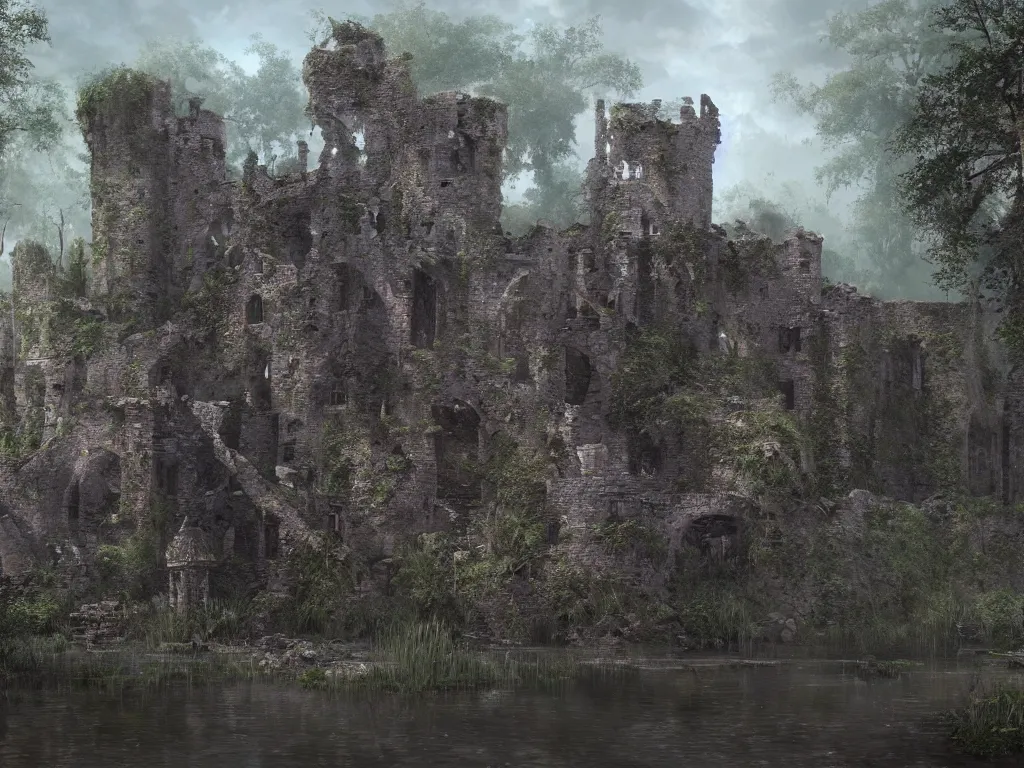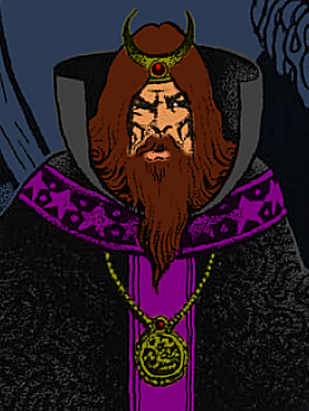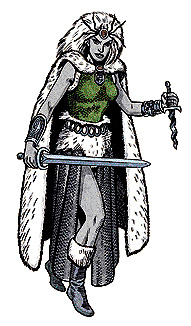Toy Soldier Campaigns
Friday, April 18, 2025
Character Creation
At the heart of every character are four core stats: Strength, Intelligence, Willpower, and Charisma. Players begin with 100 points to divide among them, with a hard cap of 50 on any one stat at character creation. These attributes are more than just numbers — they are anchors for roleplay, mechanics, and progression.
Strength governs physical might and melee damage. Intelligence handles problem-solving, knowledge, and perhaps mystical insight. Willpower measures focus, resilience, and the ability to resist manipulation. Charisma shapes leadership, persuasion, and morale.
Every character begins with four skills of their choosing. These are fully custom — if a player wants to specialize in Demonology, Blacksmithing, Cartography, or Street Fighting, they can. Each skill begins at 30, with two skills receiving an additional +10.
This system favors creativity and immersion. Players are encouraged to name skills based on how they see the world and their character’s journey through it. That open-ended freedom is intentional — it invites emergent storytelling from the very first session.
Characters start with just 2 hit points. This is not a game of spongey health bars and endless swings. Every hit has weight. Every decision in combat matters. Players can grow stronger over time, but only through experience — literally.
If a player rolls a 1–4 on a D100 skill check, they not only succeed critically — they gain 1d10 points to the corresponding stat. This means characters get better by doing, not grinding meaningless XP. After battles, they’ll earn experience that can also be spent to raise stats or skills, depending on the outcome of their journey.
Powers are not handed out freely. These are supernatural gifts, often world-specific, and should feel earned. Whether it’s Infravision, Mind-Speech, or control over elements, powers are meant to be a rare spice in a world where steel, will, and wit are the default tools of survival.
They may come from bloodlines, spiritual awakenings, mysterious encounters, or as gifts from ancient forces. They’re meant to add flavor and uniqueness — not become a crutch.
Tuesday, April 15, 2025
Wargame Meets RPG: A New Hybrid Ruleset
In the world of tabletop gaming, players are often expected to choose between the large-scale strategy of wargames and the immersive storytelling of roleplaying games. But what if you didn’t have to choose? This experimental Wargame-RPG Hybrid offers a path for those who crave both—the thrill of commanding units on a battlefield and the nuance of developing personal stories through character-driven decisions. Whether you're leading squads across a war-torn valley or guiding a lone hero through a symbolic journey, this system is designed to bridge the gap between the tactical and the narrative.
The foundation of the system is intuitive. Each unit on the field represents forty individuals, divided into four miniatures, with each miniature standing in for ten soldiers. Units are divided into two main categories: Light and Heavy. Light units are quick, moving six inches per turn, while Heavy units move at a slower pace of four inches. Repositioning or changing formation uses half a unit’s movement allowance, encouraging players to plan and coordinate their tactics carefully.
Each unit has a simple but effective stat block: Attack, Defense, Hits, and Morale. During combat, the number of dice rolled for Attack and Defense determines the outcome—attackers roll a number of d10s equal to their Attack value, and defenders roll d10s equal to their Defense. Each unblocked attack results in one hit. If a figure takes a number of hits equal to its Hit Points (typically one), it is removed from the board. Morale adds an emotional layer to combat: when a unit loses over half its figures, it must pass a Morale Test or retreat toward the edge of the battlefield. If it leaves the board, the unit is considered routed and out of the fight.
Gameplay flows through a three-phase turn structure: movement, ranged combat, and melee engagement. This streamlined order of operations allows for fluid decision-making without sacrificing tactical depth. Units with ranged weapons may strike targets within six inches and line of sight, while melee combat takes place once units are engaged in close quarters.
The heart of the RPG integration lies in the Hero Units. These are single-character figures with 2–3 hit points, capable of influencing the battlefield in powerful ways. Any friendly units within four inches of a Hero receive a +1 bonus to all stats, making them natural leaders and focal points. However, the risk is just as significant. If a Hero falls, all allied units within their influence must immediately take a Morale Test or retreat. Outside of combat, Hero Units are defined by character stats ranging from 1 to 100—Strength, Intelligence, Will, and Charisma—used in narrative scenarios, campaign decisions, or special challenges.
My favorite roleplaying experiences came from two video games: Mount & Blade: Warband and The Elder Scrolls V: Skyrim. Those games shaped how I believe a tabletop campaign should feel—fluid, seamless, and deeply immersive. When I began playing traditional systems like Dungeons & Dragons, I quickly realized they didn’t deliver the kind of integration I was looking for. I wanted a game that allowed for both large-scale conflict and personal storytelling, one that could be played solo, and one that didn’t require a dedicated game master to function. I had these ideas in my head for years, but it wasn’t until I began working with AI assistance that I found the time and clarity to finally codify them into something playable.
One of the most unique elements of this system is that it requires no dungeon master or referee. Instead, all players at the table participate equally in managing the world and keeping track of the game’s events. This democratic structure allows for shared storytelling, more seamless worldbuilding, and a stronger feeling of collective agency. It also opens the door for immersive solo campaigns, where the player can operate both strategically and narratively without needing to improvise rules or content.
Another design priority was to make the relationship between the wargame and the roleplaying aspects feel organic. I didn’t want to create two separate systems glued together. I wanted them to feel like two lenses on the same reality. What happens in battle influences the characters’ stories; what happens in narrative scenes affects battlefield morale, power, or presence. I also wanted the system to be intuitive—rules built off common sense and natural logic, not endless tables or memorization.
Above all, I believe the most innovative aspect of this project is the seamless transition between the wargame and the RPG modes. There is no hard line where one ends and the other begins. You could be deep in a skirmish one moment, and then focus in on a single Hero making a story-defining decision. These transitions don’t feel like switching games—they feel like shifting perspectives within a single, cohesive experience.
As of now, the ruleset is fully playable in its current form, but it is also designed to be modular and expandable. Planned future features include a ritual-based magic system, weather and terrain effects, fatigue mechanics, Hero leveling, and fully integrated campaign rules. Each addition will be created with care to preserve the fluid and intuitive feeling of the game’s core structure.
This blog post—and the game system itself—was written and developed with the assistance of artificial intelligence. The AI has acted not as a replacement for creativity, but as a collaborative design partner: helping structure, clarify, and synthesize years of ideas into something tangible. The process has allowed me to accelerate the translation of vision into form, and I hope the results speak for themselves.
This hybrid system is an invitation: to tell stories and make tactical decisions in the same breath, to explore character and consequence from multiple scales, and to collaborate in building a world that grows from your choices. Whether you’re a solo tactician or a group of storytellers looking for a new way to play, I believe this system has something unique to offer.
Monday, April 22, 2024
Dwarves! Goblins! Bandits! Advanced Campaigning in the King's Field
The West King's Field
Schwarzstein Keep [6/12/100 - 6/18/100]
The Moat House Raid [7/31/100]
Malborg Castle [8/5/100]
The Dwarf Fortress of Hrardven
A Rising Threat
Tuesday, April 16, 2024
Chaos Reigns in the King's Field!
War in the King's Field?
The wyvern is dead! Malborg's seal is broken!
Swazian Incursion
Missile file would mostly be exchanged by the two sides from across the river while calvalry counter attacks would be contested on either side of the Hessar. Although Swazian infantry would make an attempt to cross the river, they would be taken out by Ogth archers. With the core of their forces defeated, the Swazaians retreated back north to gather their strength while the mage of Backwood took the opportunity to reinforce his position south of the Hessar and prepare for another offensive. The Swazians had not yet made their intentions clear, but all now know that war has come to the King's Field.
Monsters of Malborg
The Marauders were on their way to Malborg when they had been ambushed by the walking dead! Suddenly, several bodies had risen from the ground. They were the bodies on long dead soldiers of Malborg Castle. Marbin used his cleric abilities to keep the zombies at bay- but a clear observation had been made. With the wyvern no longer holding back the horrors beneath the castle ruins, chaos was allowed to leak onto the surface and cause havoc across the King's Field.The Sorcerer's Apprentice, a Deep Sleep
Wednesday, April 10, 2024
West King's Field Campaign Report #3
World Building and Dungeon Delving
Encounter #1- The Dwarf Fighter
Encounter #2- The Undead
Encounter #3- Ghouls
This encounter was really scary to come across. I've always struggled against ghouls in these OSR games because they are extremely powerful against low level characters. In some systems, ghouls can straight up murder your character with one failed saving throw. In White Box, however, they can paralyze you for 3d6 rounds if you fail a saving throw against them. It also doesn't help that they are 2HD monsters so they can be quite meaty. There were three ghouls to slay. Thankfully, I rolled low on their hit points so we were able to take care of them and I passed the saving throws needed to ensure that my character would not fall to paralysis. I could see why it would be so dangerous for a solo adventurer to traverse this dungeon. It was wise to team up with that dwarf. I don't know if I would have survived without that magic armor I won in the jousting tournament.Encounter #4- Dark Elves
Encounter #5- Drider
We walked south down a hallway and reached a door that led to the drider's lair. The dark elves came up with a plan to sneak through the shadows into the lair and rain paralysis arrows on the drider- immobilizing it so that the dwarf and I could rush in with melee weapons and drain its 24 hit points with free attacks. The plan kind of worked. With the drider paralyzed the dwarf and I rushed in and chipped away a lot of hit points from it in the surprise round and the round that followed. However, the drider's paralysis faded and with one attack it killed my dwarf ally (I wanted to make him into a player character but that was the fate of the dice). The dwarf would be the only casualty of this fight, and my character would walk away with 30 gold coins paid to him and a bunch of exp for slaying a high-level monster. I thought maybe there could be much treasure and exp earned by working with these dark elves and I offered my services further. However they wished to part ways with my character after the battle. Therefore my character Geoffry returned home to the village of Backwood to rest and meditate on his most recent adventure.Tuesday, April 2, 2024
West King's Field Campaign Report #2
Knights Tournament
The Prize
The Lists
The Team Fight
From team 1 Tidfe and Sige faced off against Geoffry and Hardu from team 2 in an arena-styled battle. Once again, no one was fatally wounded in the battle but it was fierce nonetheless. Hardu was knocked out very early on in the match which left Geoffry to fight off both knights for many rounds. By the grace of the gods he was able to overcome both knights and score a victory for his team. His real challenge was about to begin.Dueling the Black Knight
-
Wargame Meets RPG: A New Hybrid Ruleset In the world of tabletop gaming, players are often expected to choose between the large-scale st...
-
An Introduction This is the first game session for my new fantasy campaign, which takes place in my personal setting of West King...
-
Character Creation At the heart of every character are four core stats: Strength, Intelligence, Willpower, and Charisma. Players begi...



























